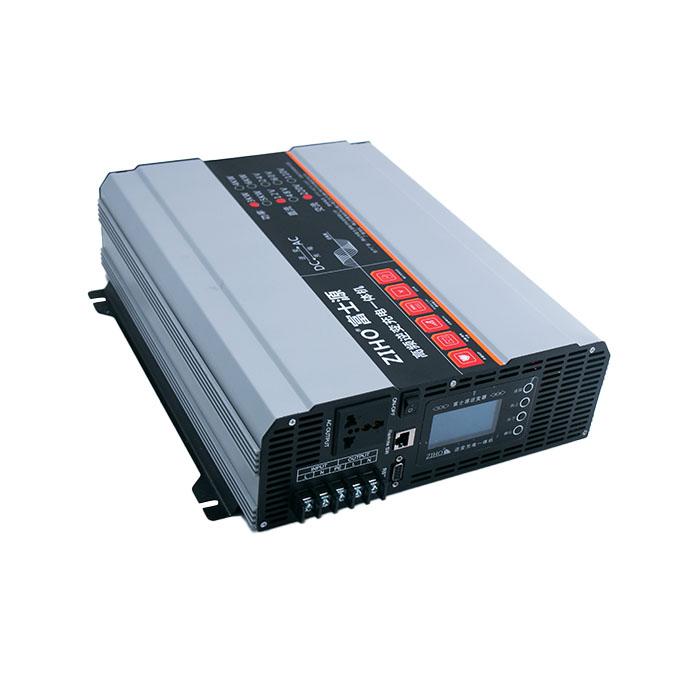Knowledge about Off-grid inverter design principles.
2024-06-19
An off-grid inverter is a key component of a standalone renewable energy system, converting DC power from sources like solar panels or batteries into AC power for use in homes or remote locations without access to the utility grid. The design of an off-grid inverter involves several critical principles to ensure efficient, reliable, and safe operation.

Key Design Principles
1. Input Power Source and DC-AC Conversion
- Input Source: Off-grid inverters typically receive DC power from batteries charged by renewable energy sources such as solar panels or wind turbines.
- DC-AC Conversion: The primary function of the inverter is to convert DC power to AC power. This involves the use of electronic components like transistors, capacitors, and inductors in a switching topology.
2. Waveform Quality
- Pure Sine Wave Output: High-quality off-grid inverters produce a pure sine wave output, closely mimicking the waveform of grid power. This is crucial for the proper functioning of sensitive electronic devices.
- Modified Sine Wave Output: Some less expensive inverters produce a modified sine wave, which is simpler and cheaper but may not be suitable for all appliances.
3. Power Capacity
- Rated Power: The inverter must be rated for the total load it will support. This includes both continuous power (normal operating conditions) and surge power (short bursts of high power demand, such as when starting motors).
- Efficiency: High-efficiency inverters minimize power losses during conversion, which is essential for maximizing the use of stored energy.
4. Battery Management
- Battery Voltage and Capacity: The design should accommodate the voltage and capacity of the battery bank. Common battery configurations include 12V, 24V, and 48V systems.
- Low Voltage Cutoff: To protect the batteries from deep discharge, inverters typically have a low voltage cutoff feature.
- Charging Function: Many off-grid inverters include integrated battery chargers to recharge the batteries from an AC source when available.
5. Protection Features
- Overload Protection: Protects the inverter from damage due to excessive power demand.
- Short Circuit Protection: Prevents damage and fire hazards in case of a short circuit.
- Thermal Protection: Shuts down the inverter if it overheats, protecting internal components.
- Input Protection: Includes features like over-voltage and under-voltage protection to safeguard the inverter and batteries.
6. Regulation and Control
- PWM (Pulse Width Modulation): Used in many inverters to generate a stable AC output. Advanced designs may use SPWM (Sinusoidal PWM) for better waveform quality.
- MPPT (Maximum Power Point Tracking): Some inverters with integrated solar charge controllers use MPPT technology to optimize the power output from solar panels.
7. User Interface and Monitoring
- Display Panels: Provide information on power usage, battery status, and system diagnostics.
- Remote Monitoring: Advanced systems may include options for remote monitoring and control via smartphone apps or web interfaces.
8. Cooling Mechanisms
- Passive Cooling: Utilizes heat sinks to dissipate heat generated by the inverter components.
- Active Cooling: Involves the use of fans to improve heat dissipation, ensuring the inverter operates within safe temperature ranges.
9. Integration with Other Systems
- Hybrid Systems: Some off-grid inverters can work in hybrid systems, integrating with grid power or generator backup for added reliability.
- Grid-Tied Capability: Certain inverters can switch between off-grid and grid-tied modes, allowing for more flexible use of renewable energy.
Example of an Off-Grid Inverter Design
1. Inverter Topology: Choose a topology like a full-bridge inverter with SPWM control for efficient and high-quality AC output.
2. Microcontroller: Use a microcontroller or DSP (Digital Signal Processor) to handle the control algorithms for PWM generation, battery management, and protection features.
3. Power Stage: Design the power stage with MOSFETs or IGBTs rated for the system’s voltage and current requirements.
4. Transformers and Filters: Include transformers to step up the voltage if necessary and filters to smooth the AC output waveform.
5. Cooling System: Implement a cooling system with heat sinks and fans to maintain safe operating temperatures.
6. User Interface: Design a user-friendly interface with an LCD display and buttons for monitoring and controlling the inverter.
By adhering to these design principles, an off-grid inverter can be created to provide reliable, efficient, and high-quality power for off-grid applications.


